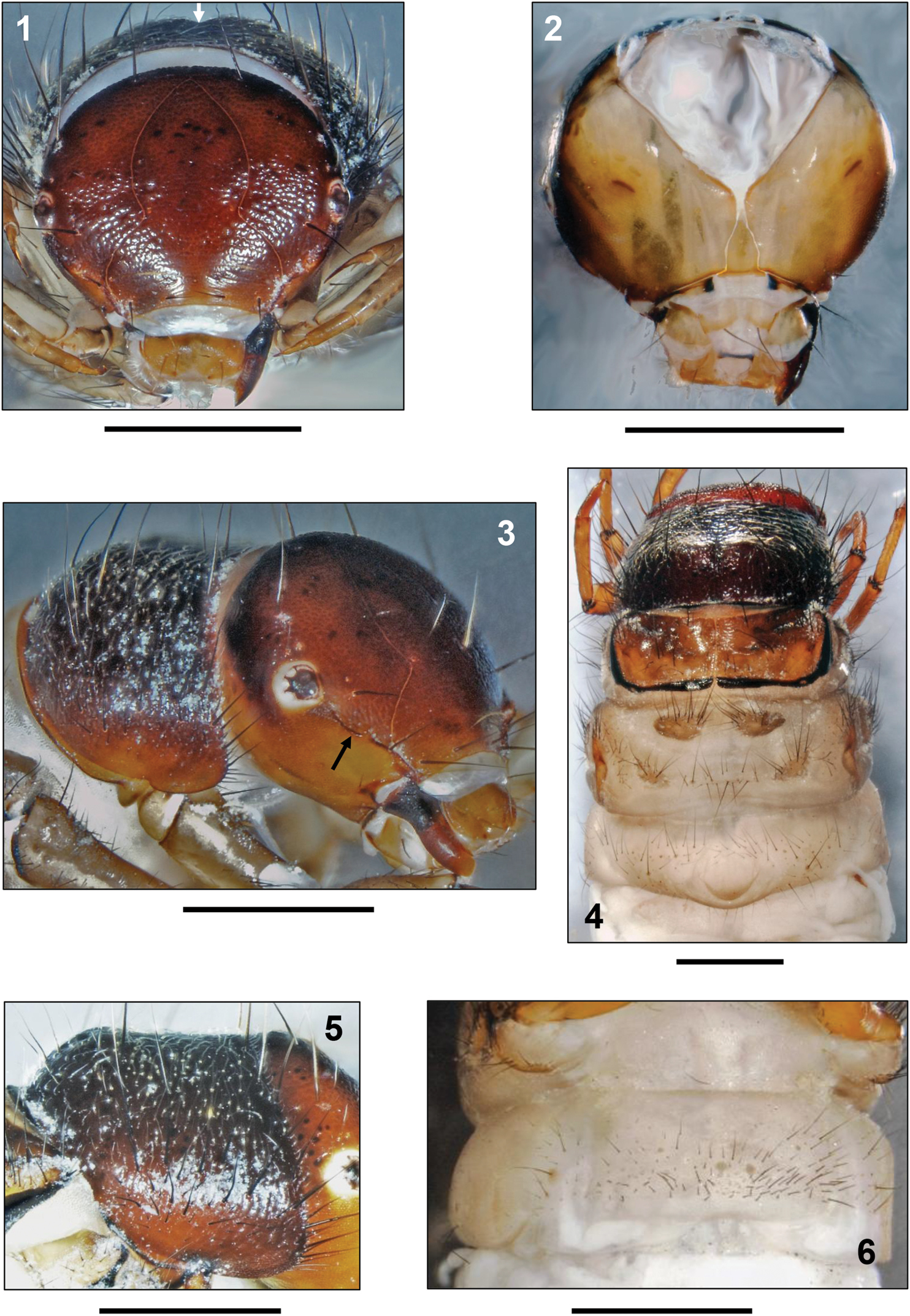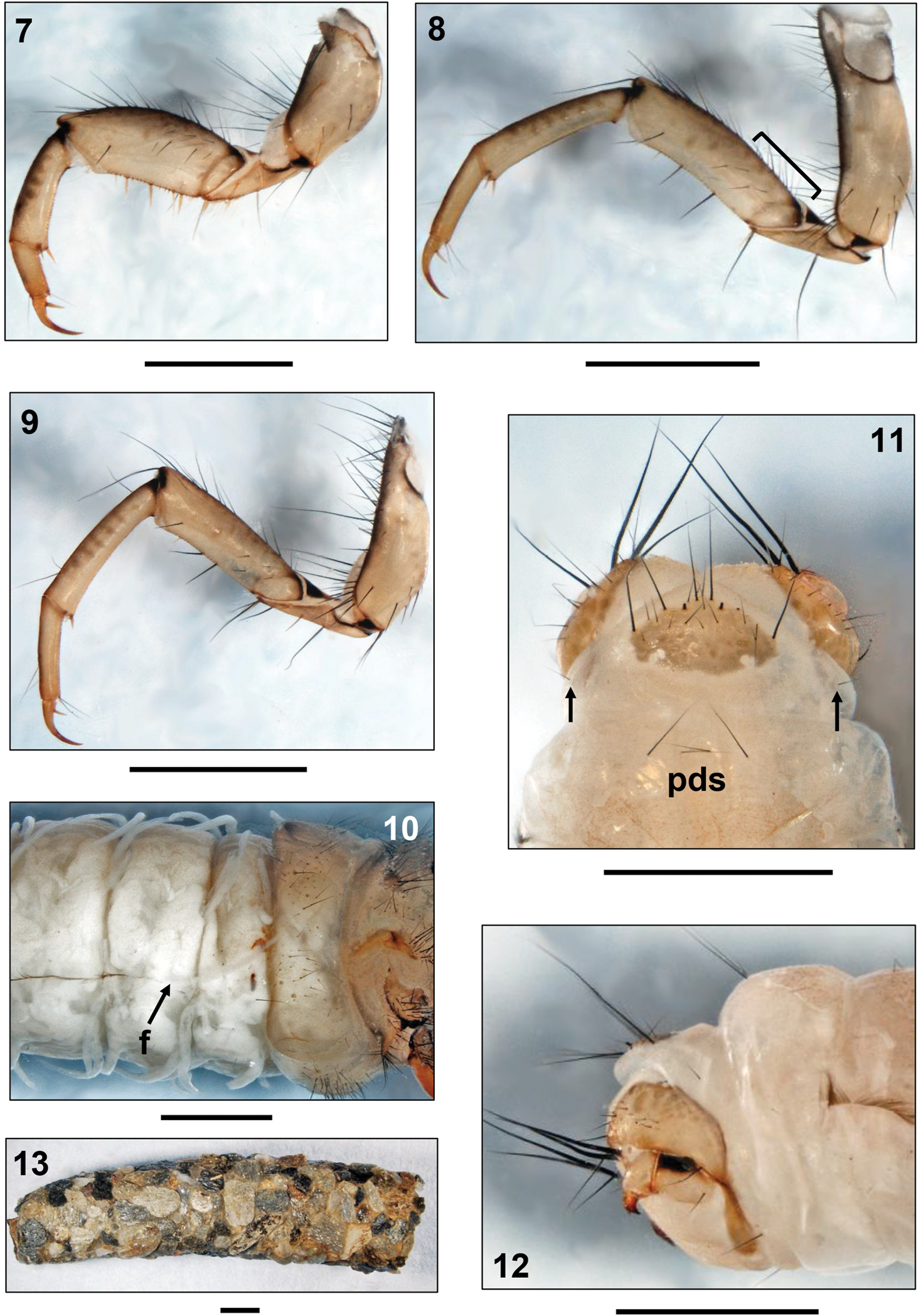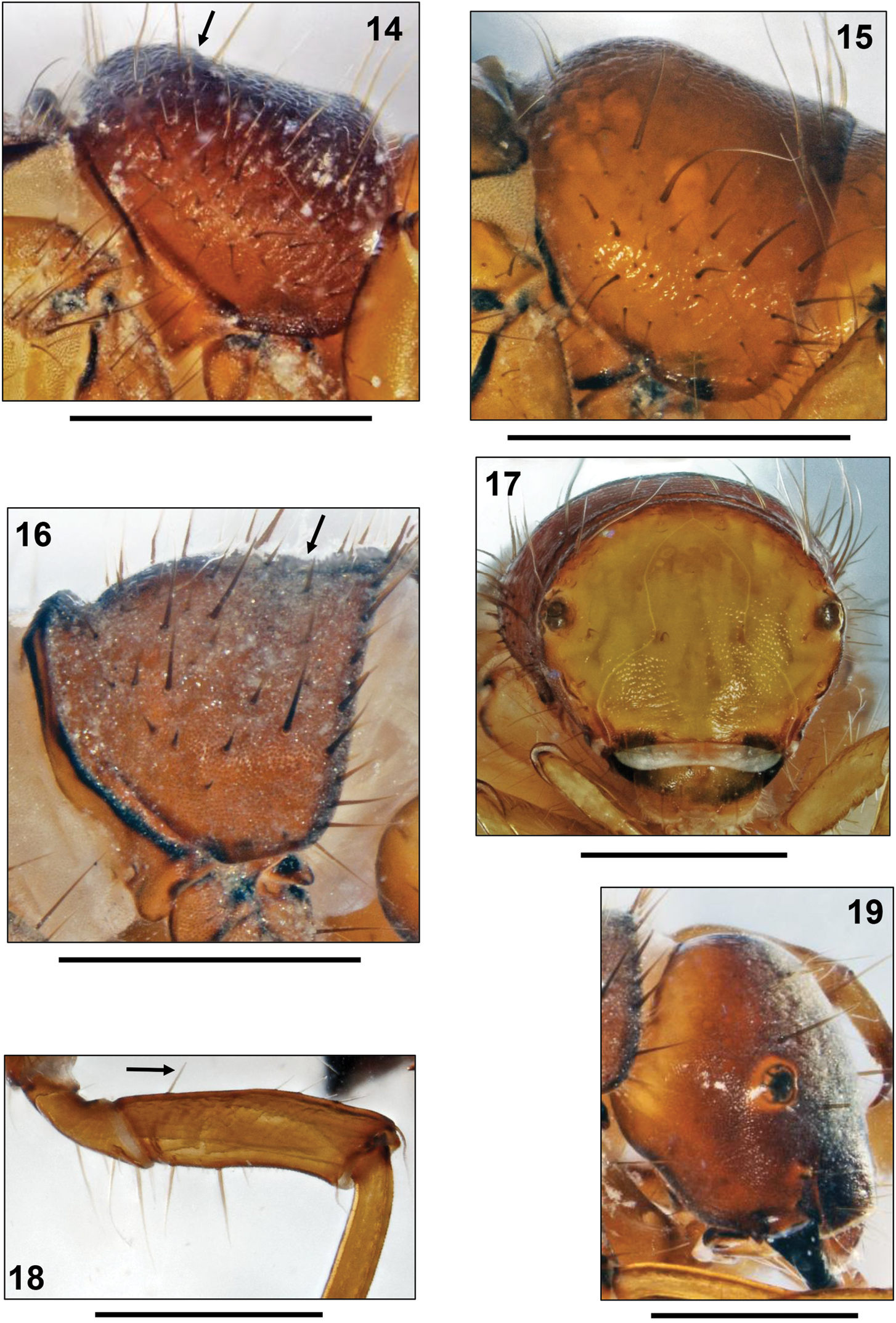






(C) 2013 Johann Waringer. This is an open access article distributed under the terms of the Creative Commons Attribution License 3.0 (CC-BY), which permits unrestricted use, distribution, and reproduction in any medium, provided the original author and source are credited.
For reference, use of the paginated PDF or printed version of this article is recommended.
Citation: Waringer J, Graf W, Bálint M, Kučinić M, Pauls SU, Previšić A, Keresztes L, Vitecek S (2013) The larva of Drusus vinconi Sipahiler, 1992 (Trichoptera, Limnephilidae, Drusinae). ZooKeys 317: 69–80. doi: 10.3897/zookeys.317.5749
This paper describes the previously unknown larva of Drusus vinconi Sipahiler, 1992. Information on the morphology of the 5th larval instar is given, and the most important diagnostic features are illustrated. In the context of existing identification keys the larva of Drusus vinconi keys together with Drusus annulatus (Stephens, 1837), Drusus biguttatus (Pictet, 1834), Drusus ingridae Sipahiler, 1993, Hadimina torosensis Sipahiler, 2002 and Leptodrusus budtzi (Ulmer, 1913). These species differ in the contours of the pronotum in lateral view, the presence/absence of the pronotal transverse groove, the shape of the median notch of the pronotum (in anterior view), pronotal sculpturing, presence/absence of the lateral carina of the head capsule, the number of proximo-dorsal setae on the mid-and hind femora, where the lateral fringe starts on the abdomen, and in geographic distribution. With respect to zoogeography, Drusus vinconi is a (micro-)endemic of the Western Pyrenees. The species prefers stony substratum in springs and springbrooks of the montane and subalpine region (
Drusus vinconi, 5th instar larva, description, identification, distribution
Extant Drusinae currently comprise 99 species. Thirty species are reported from the Alpine chain, another 34 species are known from the Balkan Peninsula (including many endemics). A total of 17 species have been described from south and southwestern Europe (Apennine, Iberia, Corsica, Pyrenees, southern France), and 18 species and 2 subspecies are known from Asia Minor and the Caucasus (
Hand nets were used to collect larvae and adults of Drusus vinconi in and beside a small stream about 7 km SW of the ski area Arette La Pierre Saint Martin, Département Pyrénées-Atlantiques, Midi-Pyrénées, France (42°57'17.67"N, 0°49'26.91"W) on 23 July 2012 (leg. W. Graf). The material was preserved in 90% ethanol. A Nikon SMZ 1500 binocular microscope with DS-Fi1 camera and NIS-elements D 3.1 image stacking software for combining 8–50 frames in one focused image were used to study and photograph the larvae.
Species affiliation was enabled by the fact that putative Drusus vinconi larvae were collected close to their locus typicus where the only other Drusinae larvae present, Drusus discolor (Rambur, 1842), are clearly different from the species in question by their dense hair cover on head and pronotum. In addition, adults of both sexes of Drusus vinconi were collected at the same sites as the unknown larvae.
Deposition of voucher specimens: 2 5th instar larvae of Drusus vinconi are deposited in the collection of J. Waringer (Vienna, Austria) and 2 5th instar larvae and 1 male and 1 female in the collection of W. Graf (Vienna, Austria). Comparative material of other Drusinae included the following: Drusus annulatus (Stephens, 1837), 9 5th instar larvae; Drusus biguttatus (Pictet, 1834), 5 5th instar larvae; Drusus ingridae Sipahiler, 1993, 1 5th instar larva; Leptodrusus budtzi (Ulmer, 1913), 1 5th instar larva (all taxa: collection of J. Waringer, Vienna, Austria).
Biometry. Body length of 5th instar larvae ranging from 9.7 to 10.8 mm, head width from 1.76 to 1.90 mm (n = 2).
Head. Head capsule coarsely granulated, almost circular in shape, hypognathous (Figs 1, 3), dorsally chestnut to black brown, with blackish muscle attachment spots. Ventral parietalia sections, submentum, maxillolabial sclerites and premandibular areas yellowish (Figs 2, 3). Eyes surrounded by whitish ring (Fig. 3). In lateral view, head capsule bearing carina which extends from anterior eye margin to anterior corner of frontoclypeus (Fig. 3, black arrow). Complete set of 18 pairs of primary setae on head capsule (nomenclature sensu
Drusus vinconi Sipahiler, 1992, 5th instar larva. 1 Head, dorsal view (arrow: median notch) 2 Head, ventral view 3 Head and prothorax, right lateral view (arrow: lateral carina) 4 Head, thorax and abdominal segment I, dorsal view 5 Pronotum, right lateral view 6 Abdominal sternum I, ventral view. Scale bars: 1 mm.
Thorax. Pronotum chestnut brown and very coarsely granulated, with adjacent series of granuli creating ribbed structures (Figs 3, 4). Posterior margin thickened and darkly striped; no pronotal transverse groove at end of anterior 3rd (Fig. 5). In lateral view, dorsal profile of pronotum low, with posterior 2/3rds being evenly rounded (Fig. 5). Along anterior pronotal border 2 setal rows present, including: i) dense fringe of short, curved, fine, yellow setae, ii) continuous row of widely-spaced long, straight, dark setae meeting at pronotal midline (Figs 1, 3, 4, 5). Each pronotal half bearing in total 35–45 dark setae of varying lengths. In addition, pronotal surface covered by high number of tiny, pale, curved, recumbent setae (Fig. 5); no spines as present in other Drusinae (e.g., Drusus trifidus). Prosternite inconspicuous, pentangular in shape, pale yellow, with light brown posterior border. Prosternal horn present (Fig. 3).
Mesonotum completely covered by 2 yellow brown to dark brown sclerites with anterolateral sections bearing darkest coloration. Median to dark brown muscle attachment spots present, lateral and posterior margins darkly sclerotized (Fig. 4). Counts for mesonotal setae (nomenclature sensu
Metanotum partially covered by 3 pairs of yellowish grey sclerites (Fig. 4). Anterior metanotal sclerites (sclerites of setal area 1, sa1, sensu
Drusus vinconi Sipahiler, 1992, 5th instar larva. 7 Right fore leg, anterior view 8 Right mid leg, anterior view (bracket: proximodorsal setae) 9 Right hind leg, anterior view 10 Metathorax and 1st 4 abdominal segments, right lateral view (f: start of lateral fringe at segment III) 11 Abdominal segments VIII-IX, dorsal view (arrows: posterolateral setae; pds: posterodorsal setae) 12 Apex of abdomen, right lateral view 13 Larval case, right lateral view. Scale bars: 1 mm.
Legs light brown with numerous setae on coxae, trochanters, and femora; tibiae and tarsi sparsely setose. Femora with several proximodorsal setae (e.g. Fig. 8, black bracket), and with setation on anterior and posterior faces; fore femora with 4, mid and hind femora with 3 yellow ventral-edge setae; no minute spines along ventral edges present. Foreleg coxa, femur and tibia wider than those of mid- and hind legs. Fore and mid trochanters with setae only on proximal sections; fore trochanters additionally with distal ventral trochanteral brush. Mid- and hind tibiae with dorsal setae only on distal 3rd (Figs 8, 9).
Abdomen. Abdominal segment I with 1 dorsal and 2 lateral fleshy protuberances (Figs 4, 10). Continuous transverse row of setae present anterior of dorsal protuberance (comprising fused setal areas sa1, sa2, sa3, sensu
All gills as single filaments (Fig. 10). Dorsal gills present at most from abdominal segments II-VII (presegmental positions). Ventral gills present from segment II (presegmental) to segment VII (postsegmental). In lateral row, gills present on segments II-III only (ventrolateral position). Lateral fringe extends from anterior border of segment III (Fig. 10f) to middle of segment VIII.
Case. Larval case 8.5–12.1 mm long (n= 2), curved, conical (width at anterior opening 2.9–3.2 mm, at posterior opening 1.9–2.2 mm), consisting of mineral particles (sand grains of mixed size; Fig. 13).
Within the framework of the larval key by
- sclerites present on pro-, meso- and metanota; mesontum completely covered by 2 sclerites in close contact separated by a straight suture; metanotum incompletely sclerotized by 6 sclerites (Fig. 4);
- prosternal horn present (Fig. 3);
- fleshy protuberances at abdominal segment I present dorsally and ventrally (Figs 4, 10);
- gills consisting of single filaments only (Fig. 10);
- transverse groove lacking at the anterior 3rd of the pronotum (Fig. 5) except in Leptodrusus budtzi (Fig. 16).
Within the subfamily Drusinae, Drusus vinconi is characterised by the following set of morphological details:
- mandibles spoon-shaped (Figs 1, 3);
- head capsule without additional spines or spinules (Fig. 1);
- anterior-row setae present near dorsal pronotal midline (Figs 1, 3);
- dorsal gills present (Fig. 10);
- dorsal edge setae restricted to distal 3rd of mid and hind tibiae (Figs 8, 9);
- basal sclerites of setae on abdominal sternum I separated (Fig. 6);
- pronotum evenly rounded (Fig. 5).
14–16 Pronota of 5th instar larvae, right lateral views. 14 Drusus annulatus (Stephens, 1837) (arrow: dorsal profile angled) 15 Drusus biguttatus (Pictet, 1834) 16 Leptodrusus budtzi (Ulmer, 1913) (arrow: transverse groove) 17 Drusus biguttatus, head of 5th instar larva, frontal view. 18–19 Leptodrusus budtzi, 5th instar larva 18 Left midleg, posterior view (arrow: proximodorsal seta) 19 Head, right lateral view. Scale bars: 1 mm.
At this position in the key, Drusus vinconi appears together with Drusus annulatus, Drusus biguttatus (Pictet, 1834), Drusus ingridae, Hadimina torosensis Sipahiler, 2002 and Leptodrusus budtzi. These species are easily distinguished by differences in dorsal profile, presence/absence of the lateral carina on the head capsule, number of proximo-dorsal setae on mid-and hind femora, origin of abdominal lateral fringe, and geographic distribution (Table 1).
Synopsis of characters separating the currently known Drusinae larvae (5th instars) which share the following morphomatrix: spoon-shaped mandibles; lack of additional head spines or spinules; anterior-row setae present near dorsal pronotal midline; dorsal gills present; dorsal edge setae restricted to distal third of mid and hind tibiae; basal sclerites of setae at first abdominal sternum separated; pronotum evenly rounded. Data for Hadimina torosensis were taken from
| Species / character |
Dorsal outline of pronotum (lateral view) | Pronotal transverse groove at end of anterior 3rd present? | Pronotum with median notch (anterior view)? | Pronotal sculpturing / cover of procumbent pale setae | Head capsule with lateral carina? | More than one proximo-dorsal seta on mid-and hind femora? | Start of lateral fringe | Distribution |
| Drusus annulatus | angled (Fig. 14) | no | no | coarsely granulated / sparse |
yes | yes | first third III | widespread |
| Drusus biguttatus | evenly rounded, high profile (Fig. 15) |
no | no (Fig. 17) |
coarsely granulated / sparse |
yes | yes | last third II | widespread |
| Drusus ingridae | evenly rounded, low profile |
no | no | coarsely granulated / sparse |
yes | yes | first third III | Pyrenees, Massif Central |
| Drusus vinconi | evenly rounded, low profile (Fig. 5) |
no (Fig. 5) |
yes (Fig. 1) |
coarsely granulated / dense |
yes (Fig. 3) |
yes (Figs 8, 9) |
first third III (Fig. 10) |
Pyrenees |
| Hadimina torosensis | evenly rounded, high profile |
no | ? | ? / ? | yes | yes | first third II | Asia Minor |
| Leptodrusus budtzi | evenly rounded, low profile (Fig. 16) |
yes (Fig. 16) | no | finely granulated / sparse (Fig. 16) |
no (Fig. 19) |
no (Fig. 18) |
last third II | Corsica, Sardinia, Mallorca |
Drusus vinconi is a (micro-)endemic of the Western Pyrenees. Its locus typicus is situated at the ruisseau de Chousse, a tributary of the Vert d’Arette, near the Serre de Benou, at 1300 m a.s.l. At this site Drusus discolor was the only other Drusinae species. Larvae of Drusus discolor are clearly different from Drusus vinconi larvae by their dense hair cover on the head and pronotum.
Adults of Drusus vinconi are morphologically close to Drusus monticola McLachlan, 1876. Differences exist in the structure of the male intermediate appendages which are triangular, and in the preanal appendages which are long and ovoid in Drusus vinconi. The female is characterised by a very short median scale (
The species was abundant in a small, stony stream near the ski area Arette La Pierre St Martin in the Département Pyrénées-Atlantiques of the Midi-Pyrénées region, France. Drusus vinconi is a rheophilic species inhabiting springs and springbrooks where it can be observed on the surface of boulders and large stones (
This paper is part of the project “The Drusinae (Insecta: Trichoptera) in a world of global change” (project number P23687-B17, PI: J.Waringer) funded by the Austrian Science Fund (FWF).


